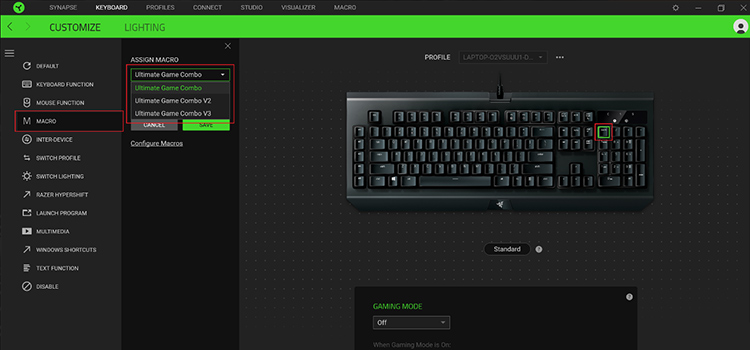How Many Volts Is an HDMI Signal | Easy Explanation
When it comes to the world of home entertainment and digital connectivity, HDMI has become the go-to standard. It’s the magical cable that seamlessly carries audio and video signals from your favorite devices to your TV or monitor. But have you ever wondered how many volts an HDMI signal carries?
Normally, the answer is ‘about 5 volts. However, it may vary to different types of HDMI cables and ports.
In this article, we’re going to unravel the mysteries of HDMI voltage and clear up some common misconceptions. Let’s get started!

How Much Power Does an HDMI Cable Supply?
Now, let’s get to the heart of the matter. How much power does an HDMI cable supply?
The short answer is that HDMI cables supply a very minimal amount of power, typically 5 volts. This low voltage is used for specific functions within your devices, and it’s not meant to be a power source for them. To put it into perspective, the voltage supplied by an HDMI cable is much lower than what you’d find in a standard wall outlet.
How Much Power Does HDMI Really Deliver?
The minimum voltage of an HDMI signal is 4.7 volts and the maximum voltage is 5.3 volts.

However, it can vary depending on the version of HDMI. To give you a more detailed understanding, let’s break down how much power HDMI can deliver in terms of electrical current.
- HDMI 1.4 and earlier versions deliver a maximum of 55mA (milliamperes) of current at 5 volts.
- HDMI 2.0, on the other hand, can provide up to 500mA at 5 volts. This increase in current capacity in HDMI 2.0 allows for features like higher-resolution video and increased color depth.
So, while HDMI provides a low voltage of 5 volts, the amount of current it can deliver depends on the version of HDMI and its capabilities. Keep in mind that these power levels are still relatively low when compared to other power sources.
So, why does HDMI provide this 5-volt power?
The primary purpose is to enable features like Consumer Electronics Control (CEC) and Audio Return Channel (ARC). CEC allows your HDMI-connected devices to communicate and be controlled with a single remote, while ARC enables audio to flow both ways between your TV and sound system through the HDMI cable.
It’s worth noting that the power supplied by HDMI is not intended to charge your devices or replace traditional power cables. It’s more about convenience and simplifying the connection between your gadgets.
The +5V Line in HDMI
You might be wondering where these 5 volts come from and where it’s used in the HDMI cable. Well, the +5V line is one of the 19 pins found in an HDMI connector. It’s usually located at pin 18 and is responsible for carrying the 5-volt power supply.
The +5V line is utilized for various purposes, including powering HDMI-connected devices in a standby mode, enabling the previously mentioned CEC and ARC features, and facilitating the hot-plug detection that allows your devices to recognize when they’re connected or disconnected.
In a nutshell, the +5V line plays a crucial role in the functionality of HDMI, making it more than just a cable for transmitting audio and video signals.
Common Misconceptions About HDMI Voltage
Before we dive into the specifics, let’s address a couple of misconceptions about HDMI voltage. Some folks think that HDMI carries a significant amount of electrical power, similar to a power cable.
However, that’s not the case. HDMI typically carries a very low voltage, around 5 volts which is used to transmit data and audio/video signals, not electricity. It’s a digital interface designed for clarity and quality, not for powering your devices.
Conclusion
In conclusion, an HDMI cable supplies a modest 5 volts of power, primarily used for features like CEC and ARC, as well as hot-plug detection. While it may seem like a small amount of power, it serves its purpose well in enhancing the functionality of your HDMI-connected devices. If you found this article informative and have more questions or need clarification on any aspect of HDMI, please don’t hesitate to leave a comment below. We’re here to help you make the most of your audiovisual experience. Thanks for reading, and may your HDMI connections always stay strong!
Commonly Asked Questions
Q: Does HDMI Carry Electricity?
A: Yes, HDMI does carry a small amount of electricity, typically 5 volts. However, its primary function is to transmit audio and video signals, not to provide significant electrical power.
Q: Is HDMI Low Voltage?
A: Yes, HDMI operates at a low voltage of 5 volts. This voltage is used for specific functions within HDMI-connected devices and is not intended for powering them.
Q: What Is The +5V For HDMI Used For?
A: The +5V in HDMI is used for various purposes, including enabling features like Consumer Electronics Control (CEC) and Audio Return Channel (ARC), as well as facilitating hot-plug detection.
Q: How Much Current Does HDMI Carry?
A: The amount of current HDMI can carry depends on the HDMI version. HDMI 1.4 and earlier versions can deliver up to 55mA at 5 volts, while HDMI 2.0 can provide up to 500mA at 5 volts.
Subscribe to our newsletter
& plug into
the world of technology





